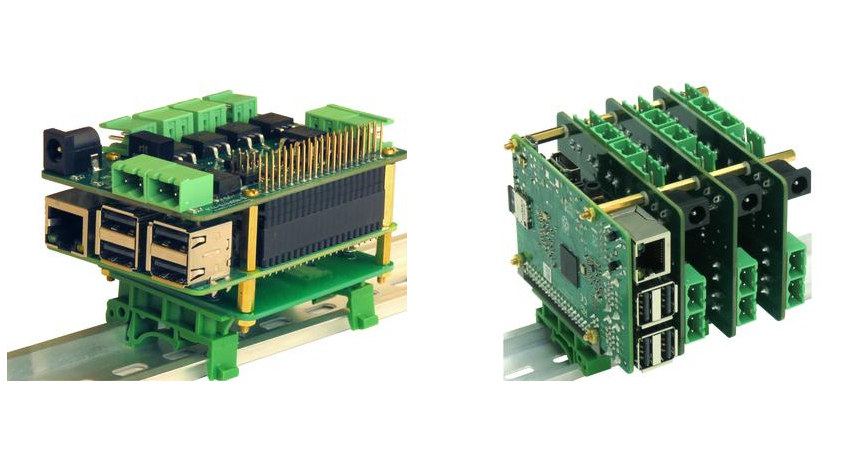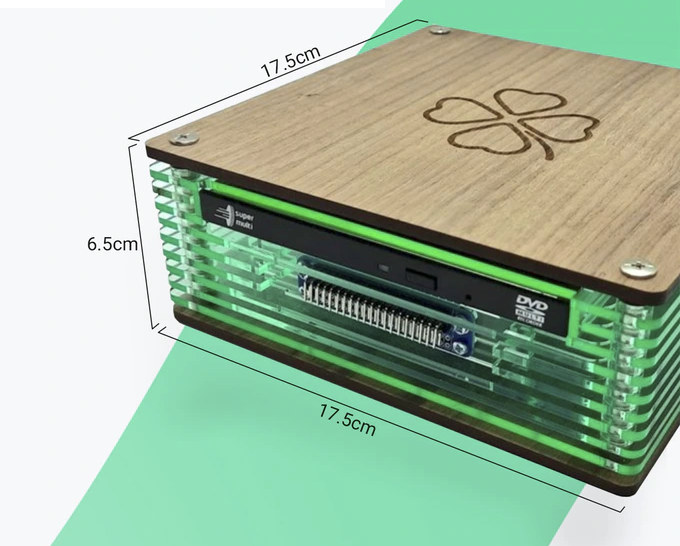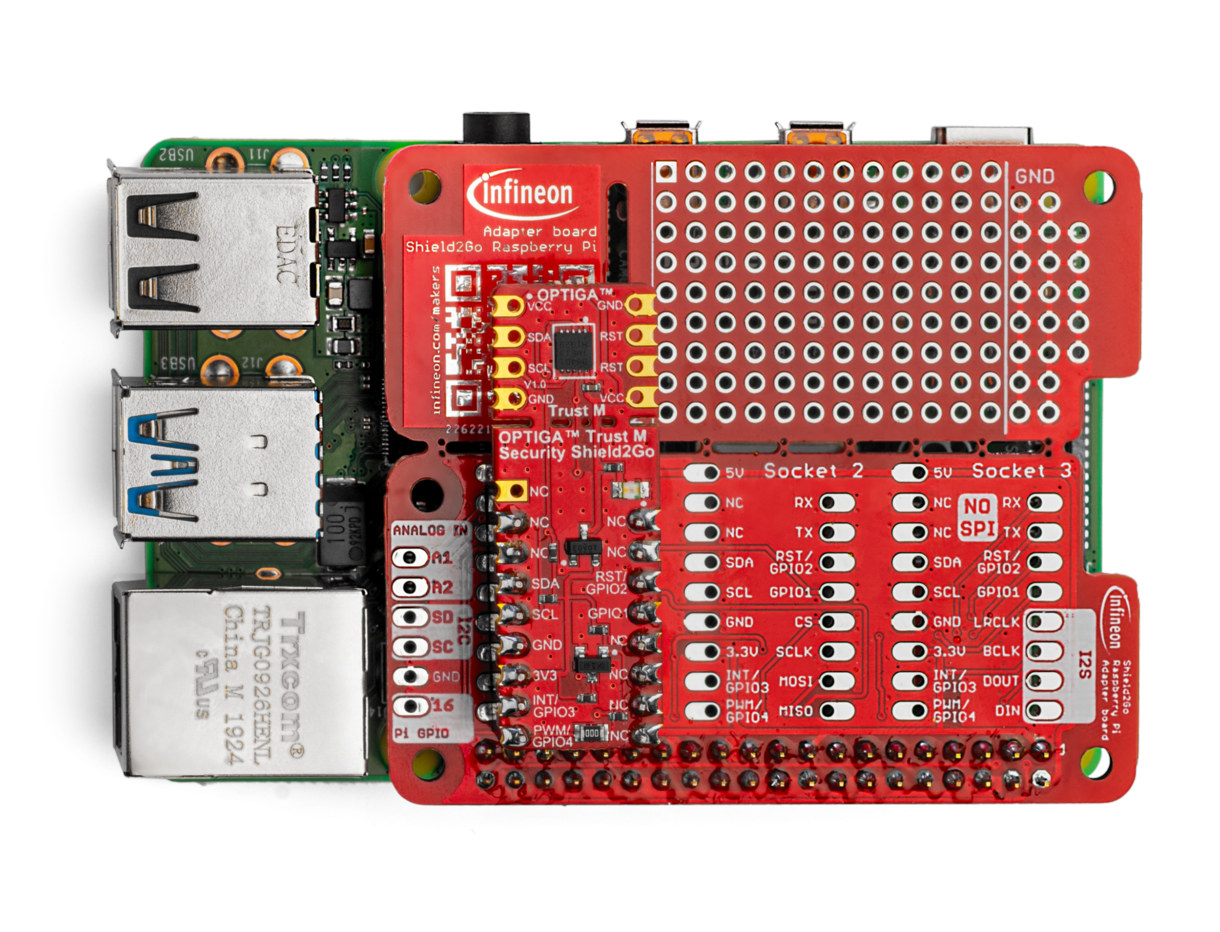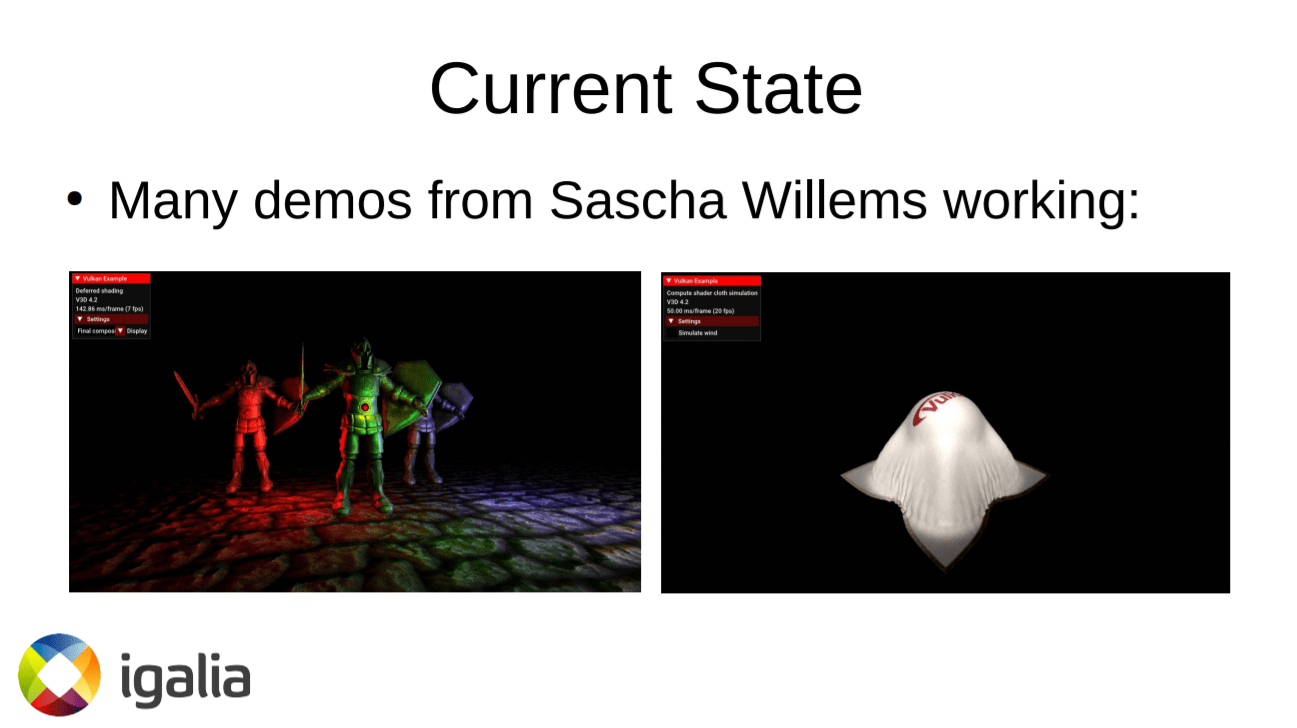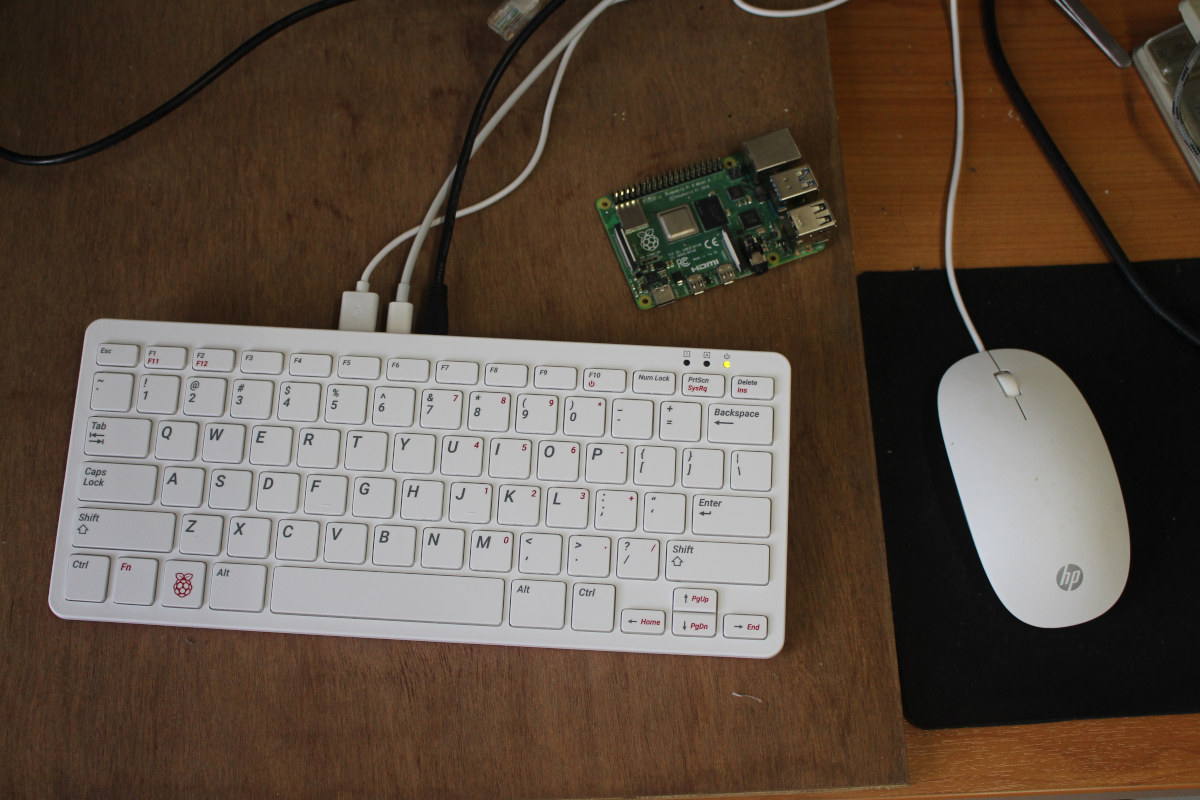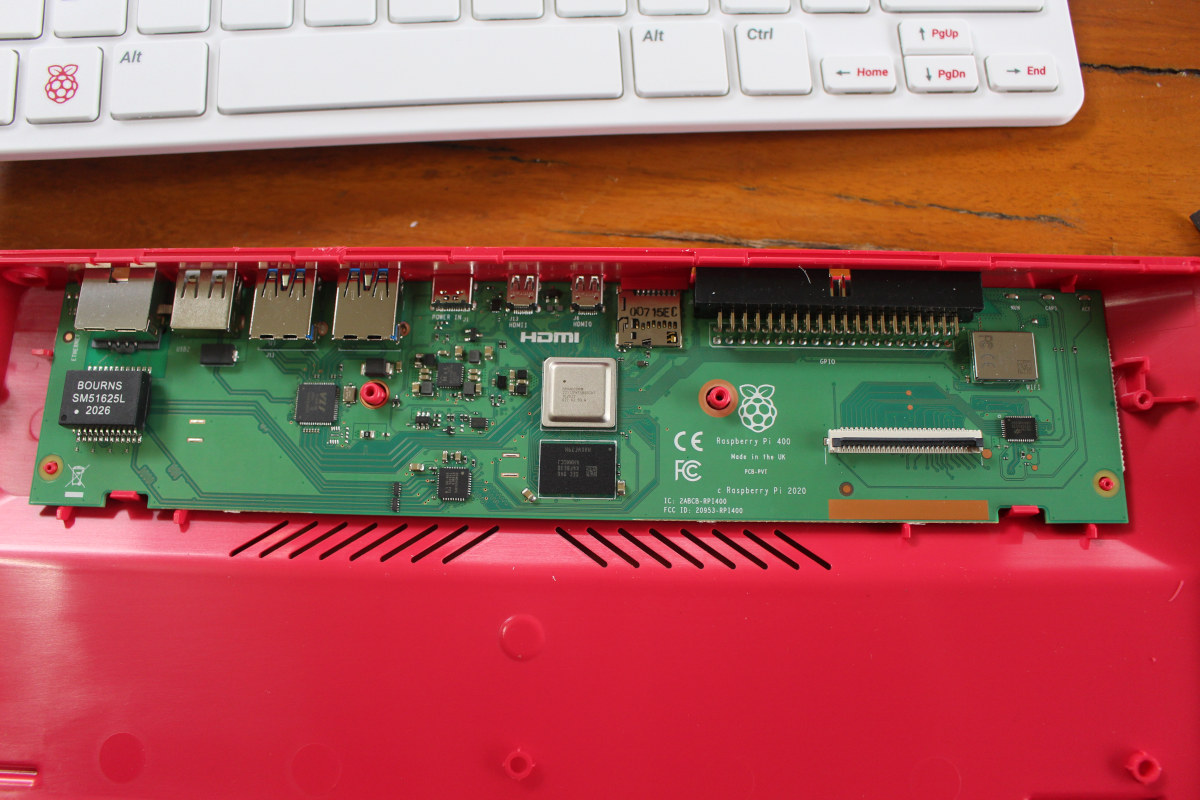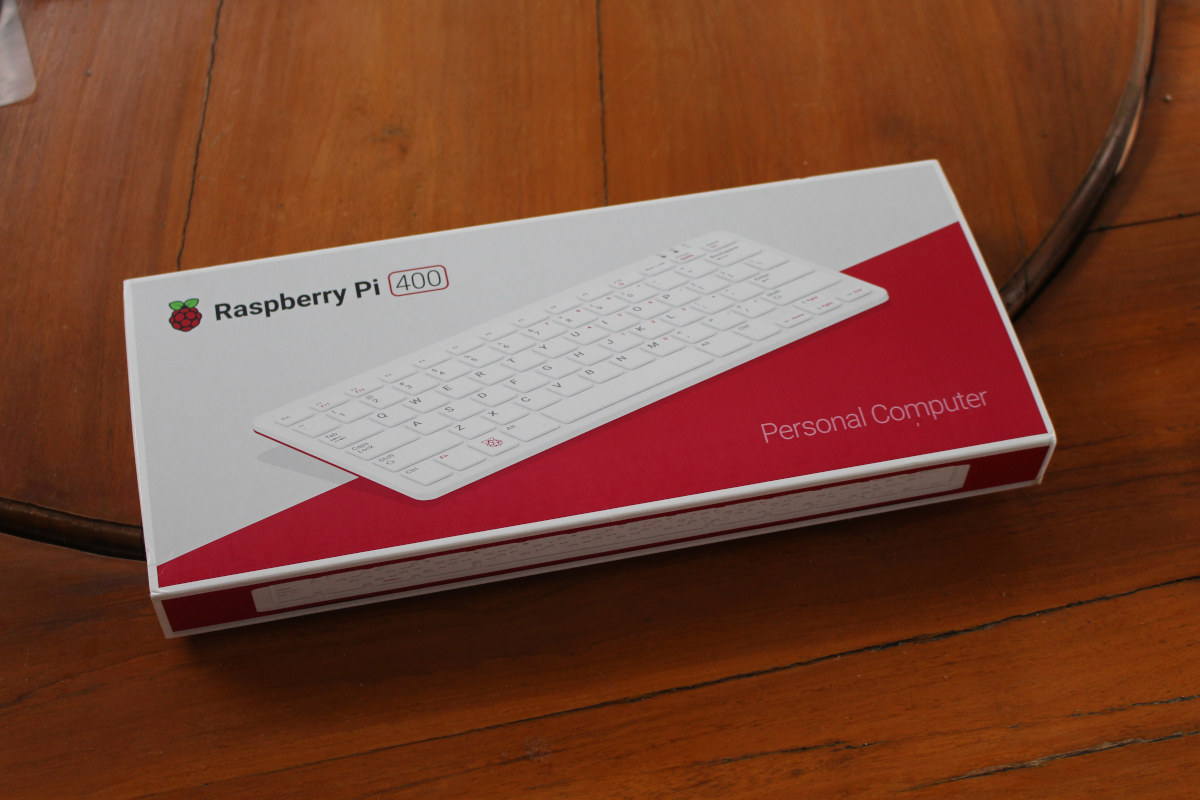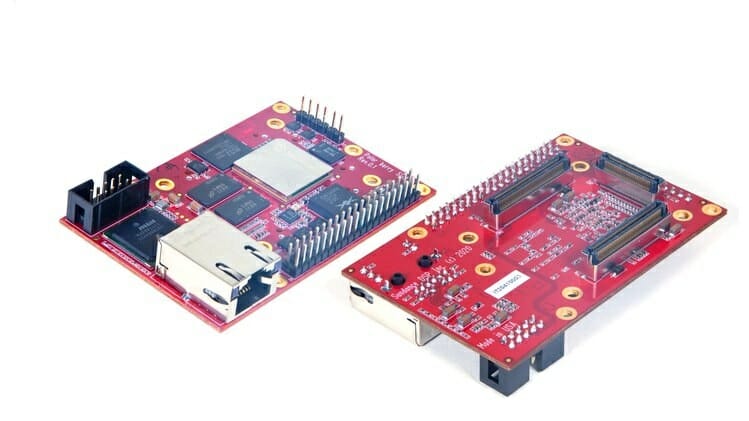Using inexpensive relays to switch AC or DC loads work well in most cases, but those relays will be quickly damaged when faced with high DC voltages, fast switching times, or other endurance requirements for which MOSFET’s are better suited, and that’s why MOSFET power supplies are found in 3D printers. Sequent Microsystems has made a habit to provide specialized Raspberry Pi HAT with relays or terminals for resistance temperature detectors that are stackable to supports a larger number for I/O or sensors. The company is now back at it with the 8-MOSFET stackable, DIN-rail mountable board that works not only with Raspberry Pi SBC, but also popular Arduino, ESP32, and other maker boards. 8-MOSFET key features and specifications: Eight MOSFETs with status LEDs 4 optimized for high-current (HC) loads up to 10 A / 24 VDC 4 optimized for high-voltage (HV) loads up to 2 A / 240 VDC […]
Rock Pi 4B or Raspberry Pi 4 based mini PC runs RISC OS Cloverleaf (Crowdfunding)
First released in 1987 by Acorn Computer Ltd, RISC OS was the first operating system designed to run on ARM processors, and specifically on the company’s Archimedes personal computer. I don’t think I had ever heard about the operating systems until it was ported to the Raspberry Pi SBC by RISC OS Open Ltd (aka ROOL) who manage the publication of RISC OS source code. But there’s also a separate project called RISC OS Cloverleaf which aims to further develop the open-source operating systems, and just launched a Kickstarter campaign to fund software development, and they also offer two mini PCs running RISC OS Cloverleaf with namely Cloverleaf Puma powered by a Rock Pi 4B SBC, and Cloverleaf Kitten featuring a Raspberry Pi 4 board. Cloverleaf Puma / Kitten key features and specifications: SBC Cloverleaf Kitten – Raspberry Pi 4 with Broadcom BCM2711 SoC, 4GB DDR4 RAM Cloverleaf Puma – […]
OPTIGA Trust-M evaluation kit for Raspberry Pi targets Connected Home over IP standard
Last December, we reported that Amazon, Apple, Google, and the Zigbee Alliance had partnered to create Project Connected Home over IP (CHIP) working group with the goal of developing a royalty-free, secure Smart Home standard to increase compatibility among products over WiFi, Ethernet, Bluetooth LE, Cellular, 802.15.4 and others community protocol. Infineon has now unveiled OPTIGA Trust-M evaluation kit for Raspberry Pi designed to experiment with Connect Home over IP standard and comprised of Infineon Shield2Go HAT/adapter board, and OPTIGA Trust-M Security Shield2Go board equipped with Infineon OPTIGA Trust-M “Common Criteria Certified EAL6+” security controller. The Shield2Go adapter just re-routes the 40-pin Raspberry Pi header I/Os to sockets compatible with Infineon boards and a prototyping area. So the most important part is OPTIGA Trust-M Shield2Go which supports the following: X.509 certificates Device authentication Cryptographic support ECC NIST curves up to P-521, Brainpool r1 curve up to 512 RSA up to […]
Raspberry Pi 4 Vulkan Project Status & Future Plans – Q4 2020
Igalia has been developing a new open-source Mesa driver for the Raspberry Pi 4 since December 2019 and announced the implementation of the classical triangle Vulkan demo last February. Four months after the announcement of the Vulkan effort for Raspberry Pi 4 (v3dv), they merged with Mesa upstream. This means Raspberry Pi 4’s v3dv Vulkan driver has become part of the official Mesa drivers. Thus, bringing several advantages, like easy to find as it is now available on the official Mesa repository. Bugs can now be filed on the official Mesa repository bug tracker. In June, they passed over 70,000 tests from the Khronos Conformance Test Suite for Vulkan 1.0 and had an implementation of a significant subset of the Vulkan 1.0 API. This does not mean that the driver is ready for production use as they have implemented the full Vulkan 1.0 API. They are now passing over 100,000 tests in the Kronos […]
Raspberry Pi 400 Keyboard PC Review and Benchmarks vs Raspberry Pi 4
Raspberry Pi 400 keyboard computer with Broadcom BCM2711C0 1.8 GHz processor has just launched, and we already published a teardown of the Raspberry Pi 400 hardware to check out the cooling solution and overall hardware design. In this review, we’ll mostly focus on Raspberry Pi 400 and Raspberry Pi 4 differences, since both devices mostly rely on the same chips. After checking the different features, we’ll run Thomas Kaiser’s “SBC Bench” script to test thermal cooling and benchmark both RPi hardware platforms. Raspberry Pi 400 vs Raspberry Pi 4 Model B Features Since under the hood, the two platforms are very similar, we’ll highlight the difference as shown in the table below courtesy of Cytron. Price is not shown in the table above, but Raspberry Pi 400 costs $70, while Raspberry Pi 4 with 4GB goes for $55. That’s $15 extra for a keyboard, case, and cooling solution, so the […]
Raspberry Pi 400 Teardown – Heat spreader and motherboard
The Raspberry Pi Foundation has just introduced the Raspberry Pi 400 keyboard computer with the guts of Raspberry Pi 4 SBC, 4GB RAM, and a 78-key keyboard. I got a sample courtesy of Cytron, so before we test the device in more detail, I decided to have a look at the internals with a teardown. Raspberry Pi 400 keyboard PC can easily and safely be opened with an old credit card or other hard cards – I used a card holding a SIM card – that you can swipe between the pink case and the white keyboard to pop out the keyboard. The keyboard is attached to the mainboard with a flat cable, so we can lift the black part of the connector to take it out, and this will reveal the large heat spreader (metal plate) that, as we’ll soon see, is the secret sauce to keep the computer […]
Raspberry Pi 400 Keyboard Computer Features 1.8 GHz BCM2711C0 Processor
The Raspberry Pi Foundation has gotten us used to wait for a while between new hardware releases, but right after having announced Raspberry Pi CM4 and CM4 Lite a couple of weeks ago, the company has now introduced Raspberry Pi 400 keyboard computer with many of the same features as Raspberry Pi 4 single board computer, but as a fully integrated computer inside a 78-key keyboard, and equipped with a slightly faster Broadcom BCM2711C0 processor clocked at 1.8 GHz instead of 1.5 GHz. Raspberry Pi 400 keyboard computer specifications: SoC – Broadcom BCM2711C0 quad-core ARM Cortex-A72 processor @ 1.8GHz System Memory – 4GB LPDDR4-3200 SDRAM Storage – Push-push MicroSD card slot for OS (USB boot also works) Video & audio output – 2x micro HDMI ports up to 1 x 4Kp60, or 2 x 4Kp30 Connectivity Gigabit Ethernet RJ45 2.4GHz and 5GHz 802.11.b/g/n/ac WiFi 5, Bluetooth 5.0 and BLE (Bluetooth […]
PolarBerry is a Compact, Linux-capable RISC-V FPGA SBC and module (Crowdfunding)
SiFive may just have announced a mini-ITX motherboard for RISC-V PCs, but if you’d like a RISC-V Linux platform in a more compact form factor, Sundance PolarBerry may better fit your requirements, albeit the board will target different use cases. Powered by Microchip PolarFire RISC-V SoC FPGA, PolarBerry is both a single board computer with Gigabit Ethernet and 40-pin GPIO header, as well as a system-on-module thanks to three Samtec board-to-board connectors. PolarBerry specifications: SoC – Microsemi PolarFire FPGA MPFS250T-FCVG484 penta-core processor with 1x RV64IMAC monitor core, 4x RV64GC application cores, FPGA fabric with 254K x logic elements (4LUT + DFF), 784 x math blocks (18 x 18 MACC), and 16 x SERDES lanes at 12.5 Gbps; 12 W maximum power consumption System Memory – 4 GB of 32-bit wide DDR4 memory Storage – 4GB eMMC flash, 128 Mbit SPI Serial NOR flash for boot image Networking – Gigabit Ethernet […]


